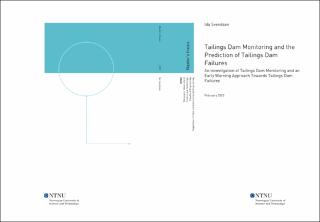| dc.description.abstract | Waste materials produced by mining activities (tailings) can be collected in artificial ponds delimited by earth embankments (tailings dams). In case of tailings dam failure, the consequences are often catastrophic for the surrounding communities and livelihoods as this rupture may release large amounts of tailings and mining wastewater that moves downstream. Furthermore, the mining by-products cause, in many cases, a devastating impact on the surrounding environments and ecosystem. As an increased trend of tailing dam failure has been observed in the last decade, there is an urgent demand from the industry as well as the civil society and the investor community to gain a broader understanding of the risks posed by tailing facilities. Furthermore, efficient techniques to monitor and predict the failure of tailing dams are also crucial.
This study investigates how the satellite remote sensing interferometric synthetic aperture radar (InSAR) technique can be used to monitor tailings dams and the applicability of the inverse velocity method to predict failures. InSAR data have been used to map surface displacement in two case studies: the Feijao tailings dam in Brazil and the Cadia tailings dam in Australia. In the case of the Feijao dam, both the Small Baseline and Persistent Scatter techniques were applied to process displacement time-series from the satellite data. For the Cadia dam, data processing was carried out using the SqueeSAR algorithm.
The inverse velocity method uses surface displacement measurement points to predict a time of failure. For the Feijao dam InSAR dataset, the inverse velocity method was applicable to different periods presenting an evident increase in the displacement rate. However, it was difficult to retrieve any reliable indication of failure. Contrary to the Feijao dam, the results from the Cadia dam shows a significantly accelerating deformation with time, and by applying the inverse velocity method a predicted time of failure can be retrieved in good agreement with the actual one. | |
